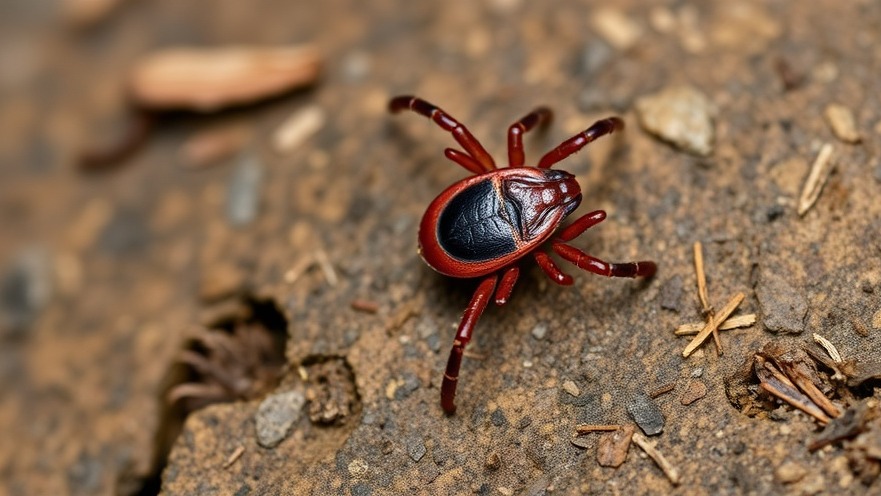
The Hidden Threat: Understanding Lyme Disease
Lyme disease, often dubbed the most prevalent tick-borne illness in the U.S., captures the attention of health professionals and outdoors enthusiasts alike. With approximately 476,000 new cases diagnosed each year, this condition represents more than just a mild annoyance; it is a serious health risk associated with outdoor activities during the warmer months. The black-legged tick, which harbors the bacterium Borrelia burgdorferi, inflicts more than a simple bite—it can unleash a spectrum of debilitating symptoms ranging from fatigue to neurological issues.
What You Need to Know About Ticks and Lyme Disease
Many may identify ticks with their long hikes in the woods, yet they can also lurk in suburban backyards, particularly in states with a higher incidence of Lyme disease such as Connecticut, New York, and New Jersey. Awareness and proactive checks are crucial, especially after any time spent outdoors. To guard against tick bites, individuals should wear light clothing to spot ticks more easily and conduct thorough checks upon returning indoors. Body areas often overlooked include behind the ears, under the arms, and in the hair, where ticks tend to hide.
Symptoms and Diagnosis: Early Intervention is Key
If a tick bite does occur, swift action is paramount. Lyme disease symptoms typically begin with headaches, fatigue, and a distinct rash resembling a bull's-eye. However, as the infection progresses, it can affect the nervous system, leading to complications like facial palsy or severe headaches. Dr. Laurie Radovsky, an expert in Lyme treatment, emphasizes that immediate medical attention and prompt antibiotic treatment after a tick bite can be the difference between a quick recovery and chronic complications.
How Lyme Disease Affects Daily Life
Living with Lyme disease can drastically change an individual's lifestyle. Persistent symptoms, including chronic fatigue and cognitive dysfunction, can create barriers to participating in day-to-day activities. Many patients report feelings of isolation and frustration, making it essential that friends and family understand the invisible nature of this illness. Sharing stories and support within the community can help raise awareness and assist those battling Lyme disease.
Exploring Treatment Options: Conventional vs. Alternatives
Following a diagnosis, treatment often involves a regimen of antibiotics. However, some patients explore complementary therapies as well. Practices such as yoga, acupuncture, and herbal supplements are gaining popularity in the Lyme community, offering additional avenues for symptom management. Naturopathic medicine, which focuses on holistic healing, has drawn attention as patients seek integrated approaches for long-term wellness. The holistic view encourages individuals to not only address their physical health but also to focus on mental and emotional well-being through community health and wellness initiatives.
Future Directions: Research and Advocacy
As awareness of Lyme disease continues to grow, so does the need for research and advocacy. This includes educating the public about preventative measures and ensuring that healthcare professionals are equipped to recognize the early signs of tick-borne illnesses. Patients and advocates are increasingly demanding transparency and improved protocols for diagnosis and treatment, creating a ripple effect that could lead to more significant advancements in managing Lyme disease.
Stay Informed and Healthy
Given the prevalence of Lyme disease, being proactive can help you stay healthy. Be conscious of your surroundings, educate yourself about preventative measures, and never hesitate to consult your healthcare professional if you suspect you've been bitten by a tick.
For those in the San Antonio area, explore local health and wellness resources that focus on optimal health management, including workshops and community health events. Your well-being is paramount, and staying informed can make all the difference.
 Add Element
Add Element  Add Row
Add Row 



Write A Comment